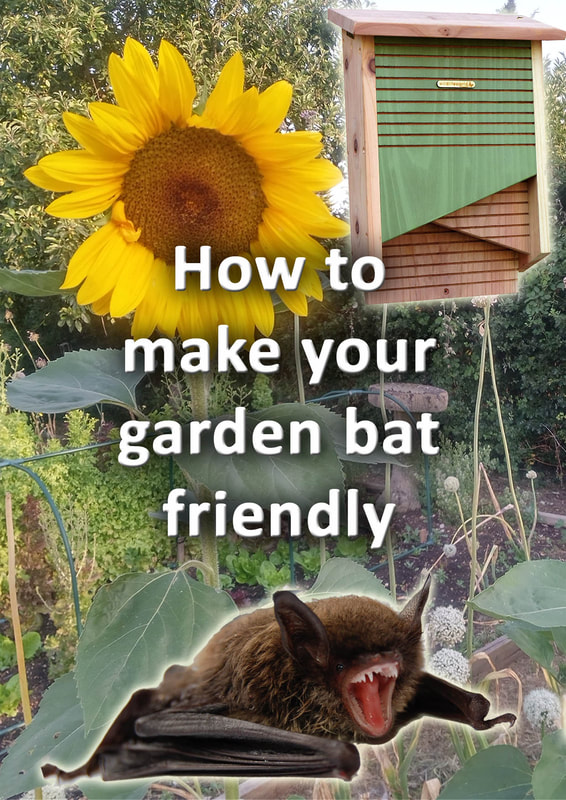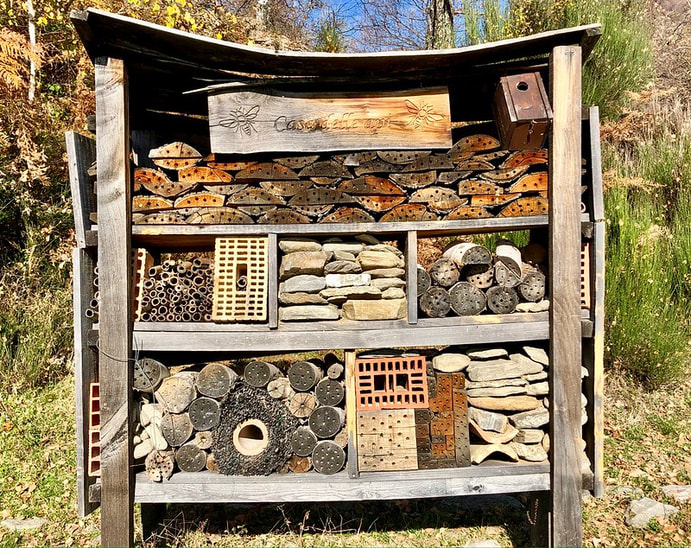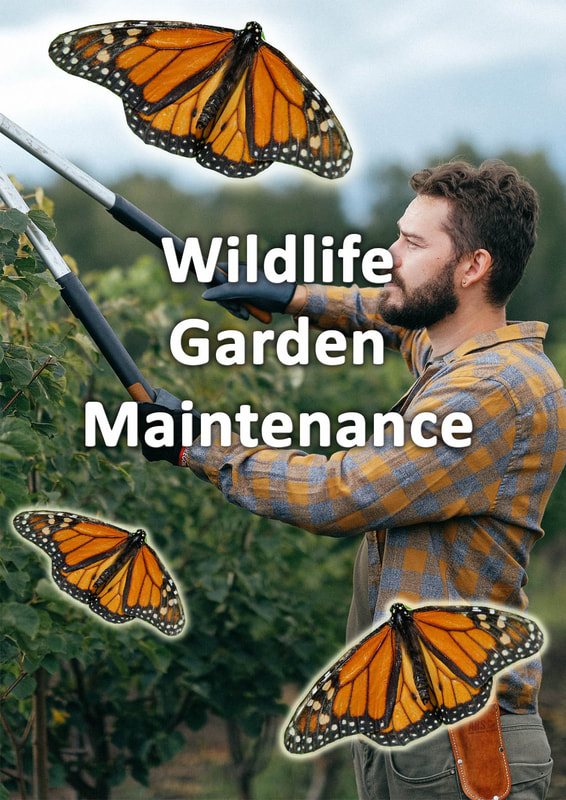|
This article contains affiliate links
Bats are the only mammal species in the world that can fly. These remarkable creatures come out at night foraging our yards and gardens to hunt for flying insects. You can occasionally see bats during dusk when they come out to hunt on the wing. Unfortunately, garden bats have declined dramatically in the last 50 years by up to 70%. This is due to many factors including loss of habitat, declining prey species and a reduction in suitable roosting sites. In the past, buildings were much more likely to have imperfections and cavities where bats could seek shelter. Large, mature and dead trees within the landscape also provided great hibernation and roosting sites. Today an increase in intensive agriculture and modern development have reduced suitable habitat for bats to thrive. Hence, in this article, we will explain how you can make your garden bat friendly and attract bats into your garden. We will explore what habitats, plants, maintenance and installations which can be implemented to make your garden a bat haven. What do garden bats eat?
All bats have a very varied diet but generally hunt flying insects while on the wing! This means they typically eat insects which fly at night including mosquitoes, gnats and moths among others. Therefore, if you want to attract bats into your garden you should also aim to encourage flying insects. Are bats good for the garden?
Bats are extremely beneficial to the garden consuming many pests including biting insects and plant eating bugs. As with many modern gardens there is a distinct lack of predators. This creates a natural imbalance and increases the chance of pest species flourishing. Are garden bats endangered?
Generally, as a whole, all species of garden bats are endangered. There may be areas however where localist populations thrive! Overall, bat numbers have reduced by 70% and with no sign of reversal in habitat loss, all bat species are considered threatened. However, the Serotine, Barbastelle, Long eared bat and Great mouse eared bat are officially endangered in the UK. Near threatened species include the Nathusius pipistrelle and Leislers bat. Are all bats protected?
All species of garden bats in the UK & Europe are protected by law. This means it is an offence to handle them, disrupt their roosts or places of hibernation without a license. Where do bats go during the day?During the day bats go back to dark and shelter places known as roosts. These could be within the cracks or hollows of trees, rocky cliffs, old buildings, sheds and roofs. Do garden bats hibernate?
Garden bats do hibernate and generally head to their hibernation sites in late autumn. During this time bats will find somewhere hidden and sheltered from winter weather. During hibernation they will lower both their metabolism and body temperature. This is to reduce their need for energy and extra calories when natural food sources are scarce. How to attract bats into your garden?
Like all wild species, if you want to attract bats into your garden you should encourage natural balance. This involves creating a variety of habitats catering for numerous species within the local ecosystem. If your garden is thriving with a great diversity of insects and invertebrates it will also be good for bats. Below I have listed and described 10 ways to make your garden more bat friendly. 10 Ways to make your garden bat friendly
1. Build a wildlife pond
One of the best things you can do for attract bats into your garden is to build a wildlife pond. Many of the insects that bats love to eat spend some of their early development in water. Insects like mosquitoes, damselflies and crane flies emerge from ponds as adults and quickly get snapped up by hungry bats. Ponds also attract many flying insects around dusk when bats prefer to hunt. Wildlife ponds also increase the diversity of species within and around a garden. Such a vibrant ecosystem is much more likely to encourage flying predators such as bats. 2. Create a wildflower meadowWildflower meadows are grasslands rich in wildflowers which are left to grow to their full height during the growing season. This has two main benefits for bats; firstly, the dense cover provides plenty of shelter for many insect's bats like to feed upon. Secondly the diverse arrays of wildflowers are a magnet for pollinating insects and moths which bats love. As with wildlife ponds, meadows enrich the environment as a whole, helping to boost local ecology. Such rich habitats are much favoured by bats. 3. Create a woodland gardenOne of the main reasons that bats have been declining for many years is a lack of suitable habitats. Bats naturally like places with plenty of trees and dense cover like a natural woodland. Such environments provide plenty of opportunities for both roosting and hunting. Woodland gardens do not even have to have large trees to be beneficial to bats. Woodland shrubs and plants can be grown within shady areas to create mini woodland habitats for bats. Why not read our article on how to create a woodland garden here. 4. Provide dead wood habitatsDeadwood habitats were once a common feature within the landscape before large areas of forests were cleared. Dead and decomposing wood is perfect habitat for thousands of decomposer species. Some of these include specialised, fungi, bacteria, insects and invertebrates. Even if these are not directly eaten by bats, they invigorate the lower portion of the food chain. Decomposing wood not only provides food and shelter for small wildlife it also helps to form healthy soil. Healthy soil is the foundation base of any thriving ecosystem. If you have healthy soil, you will have healthy amounts of wildlife! This will intern make your garden more bee friendly. 5. Plant diverse native and ecological plantingOne of the most important parts of attracting bats into your garden is diversity. The greater the diversity of plants and vegetation, the more prey species there will be. When planting your garden try to include a good variety of different plants. Try to include some plants which are native to your region. This will instantly attract wildlife adapted to your locality. Also plant some non-native plants which are known for providing pollen and nectar. A good example of this would be shrubs like the butterfly bush. Try to plant as many beneficial plants for wildlife as possible which will ultimately provide extra food for bats. Why not visit our article on the best 85 plants for attracting wildlife into your garden. 6. Install bat boxesOne of the largest contributors to declining bat numbers is a lack of suitable roost sites. Before mass deforestation, bats mainly roosted within the structure of very old trees. Consequently, when old forests were cleared it deprived most bats of suitable places to raise young and hibernate. A great way to mitigate this problem is to install bat boxes of which there are many types on the market. Try to install boxes as high up in trees as you can or just under the roof of your home. Make sure a boxes orientation receives some morning or afternoon sun but not full sun all day. Providing good quality roosting sites is a very proactive way of making your garden more bat friendly. 7. Grow scented plantsGrowing plants which give off scent is a good strategy for attracting bats into your garden. Plants with scented flowers have evolved to attract flying insects to their blooms. Flowering plants which give off extra scent in the evening are even more effective at attracting flying insects. Plants like White Jasmine, Evening Primrose and Honeysuckle all draw in numerous flying insects to a given area. All of which can become quick, tasty, meals for hungry bats encouraging them to visit your garden regularly. 8. Build a bug hotelBug hotels are simple but intricate structures which provide plenty of nooks and crannies for small creatures to seek shelter. These are typically created using a combination of organic waste and recycled materials. Bug hotels do not even have to look messy or untidy, many examples look extremely aesthetic and artistic. You can design your bug hotel any way you wish and even to attract specific bug species. As far as bats are concerned, the more bugs you have dancing around your garden the better. Therefore, a well-built bug hotel is a great way to make your garden more bat friendly. 9. Keep cats in at nightCats are magnificent animals and a real joy to have as part of the family. However, no matter how cute and cuddly they seem they are extremely efficient hunters. As amazing it seems that cats could catch bats on the wing they can! Cats have a very keen eye for movement and are extremely fast and agile. Bats use specific flight paths along linear landscape features such as hedges and fences. Unfortunately, this leaves them very vulnerable to ambush by house cats. If you want to reduce the risk to bats in your garden keep your cats inside at night! 10. Don’t use chemicals
It is easy to be tempted to use chemicals to solve garden problems such as weeds and pests. However, it is important to realise that such chemicals affect all living creatures within your garden. Bats will consume hundreds of flying insects and other creatures within their territory. Therefore, they will be ingesting any creatures which have been affected by chemicals and poisons. This can lead to the death of local bats ruining any positive bat friendly efforts you have undertaken. Just because there is no evidence particular insecticides kill other creatures it doesn’t mean they do not There are many examples of past chemicals which were once thought to be safe which are now banned. If you want to make your garden bat friendly, please do not use chemicals. Wildlife garden services
Buckinghamshire landscape gardeners are experts in wildlife garden design and construction. Acting as the domestic landscaping part of Ecospaces we have over 20 years experience in ecological landscaping and sustainable construction. If you are interested in our wildlife garden services please do not hesitate to contact us. Our wildlife garden services include:
|
The Author
|
Landscaping services across Buckinghamshire, Amersham, Aylesbury & High Wycombe
Hyde Heath, Amersham, Buckinghamshire |
|











































